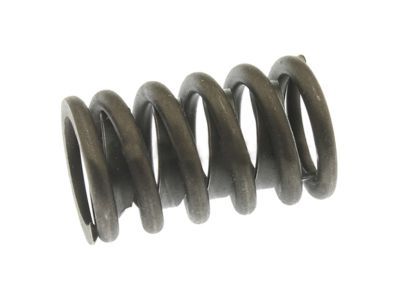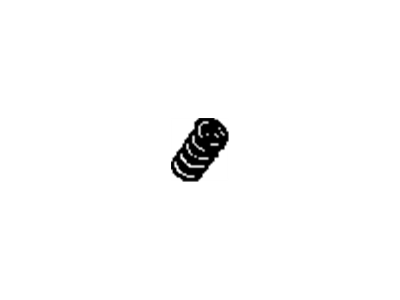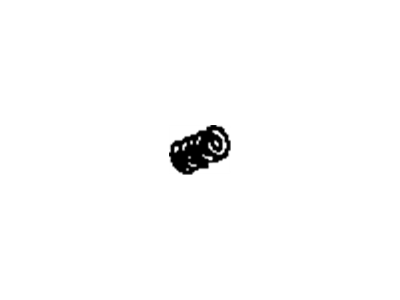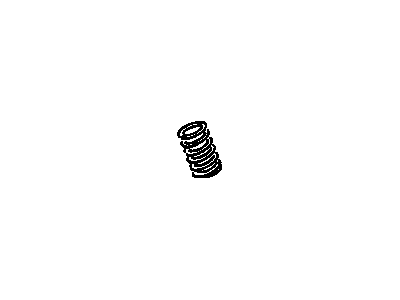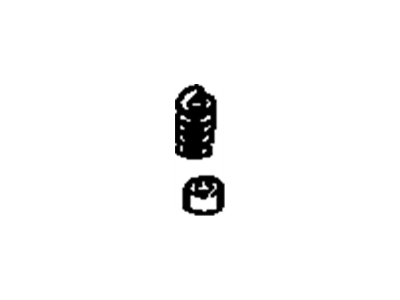My Garage
My Account
Cart
Genuine GMC Jimmy Rocker Shaft Spring Kit
Rocker Shaft Spring Set- Select Vehicle by Model
- Select Vehicle by VIN
Select Vehicle by Model
orMake
Model
Year
Select Vehicle by VIN
For the most accurate results, select vehicle by your VIN (Vehicle Identification Number).
7 Rocker Shaft Spring Kits found
GMC Jimmy Spring,Valve(W/Dampener)
Part Number: 3911068$8.78 MSRP: $13.81You Save: $5.03 (37%)Ships in 1-3 Business DaysGMC Jimmy Spring Assembly, Valve
Part Number: 14025512$9.56 MSRP: $15.04You Save: $5.48 (37%)Ships in 1-3 Business DaysGMC Jimmy Spring,Valve
Part Number: 10212811$12.38 MSRP: $19.48You Save: $7.10 (37%)Ships in 1-2 Business DaysGMC Jimmy Spring Assembly, Vlv
Part Number: 94666580$8.78 MSRP: $13.81You Save: $5.03 (37%)Ships in 1-3 Business Days
GMC Jimmy Rocker Shaft Spring Kit
Each OEM GMC Jimmy Rocker Shaft Spring Kit we offer is competitively priced and comes with the assurance of the manufacturer's warranty for the part. Furthermore, we guarantee the speedy delivery of your orders right to your doorstep. Our hassle-free return policy is also in place for your peace of mind.
GMC Jimmy Rocker Shaft Spring Kit Parts Questions & Experts Answers
- Q: How can you replace broken valve springs or defective valve stem seals without removing the cylinder head on 2.2L four cylinder engine on GMC Jimmy?A: Special tools and a source of compressed air are necessary to enable you change broken valve springs or faulty Valve Stem Oil Seals without taking off the cylinder head. Start by removing the spark plug from that particular cylinder (or all plugs if changing all seals). One cylinder at a time, start with number one cylinder at TDC, following the firing order. Put an adaptor into the spark plug hole, then link it up with an airline hose for supplying compressed air. Unbolt the Rocker Arm nut, remove the pivot ball and rocker arm from the leaking valve and take out the push rod. Supply compressed air to the cylinder in order to retain valves. Bring down valve spring compressors so that they can squeeze springs and hence release them from keepers. Get rid of spring retainer and valve spring, then replace guide seal making sure it is pushed downwards onto top of guide tube. Apply engine oil on valve stems and insert spring back followed by retainer forcing springs to their right places using locking tabs. Disconnect air hose, unthread adapter then reassemble rocker arm along with Pushrod, spark plug and finally valve cover. Turn on engine and look for oil spills as well as strange noises near that head cover area. Failure of pressure to hold down valve when closed may suggest either damage in valve itself or its seat or both thus meaning extensive repair by removing head.
- Q: How to replace broken valve springs or defective valve stem seals without removing the cylinder heads on 4.3L V6 engine on GMC Jimmy?A: To replace broken valve springs or defective Valve Stem Oil Seals without removing the Cylinder Heads, keep these steps in mind, First, take off the valve cover(s), and both should be removed if all Valve Stem Oil Seals are to be replaced. For all seals replacement, remove the spark plug from the cylinder having problem or remove all of them. Turn the crankshaft until the affected piston is brought to top dead center on compression stroke. Start by cylinder number 1 in case of replacing all seals and follow through with cylinders following the firing order. An adapter is threaded into the spark plug hole and an air hose connected to a compressed air source, holding closed valves. Insert shop rags into cylinder head holes to keep debris from dropping into the engine. With a valve spring compressor, compress spring/damper assembly and remove keepers. Lift out spring retainer/oil shield/valve spring assembly along with intake valve's O-ring seal on valve stem and umbrella type guide seal. Wrap a rubber band or tape around the valve stem to avoid it falling into combustion chamber and release pressure of air. Check that there are no damages on valve stem and make sure it moves freely in guide. Lubricate valve stem and fit new intake valve umbrella-type guide seal for intake valves insertion point where it's stuck at top position around a piece of dowel pin that fits inside of it via available range at bottom of spring retainer channel. Install d/spring/damper assembly & shield compressing it enough for you then install n/O-ring seal over v/stem; Position either v/spring retainer or rotator; place "keepers" using dab of grease for retention till pressure is taken off s/tool; Disconnect air hose; put Rocker Arm(s) & Pushrod(s) then that may be followed by reinstallation of valv/e covers; Reinstall spark plug(s) & wires, start engine and run engine also check for any oil leakage or any unusual sounds around the valve cover area. Be advised that these procedures require specialized tooling and should be performed with caution.
Related GMC Jimmy Parts
Browse by Year
2001 Rocker Shaft Spring Kit 2000 Rocker Shaft Spring Kit 1999 Rocker Shaft Spring Kit 1998 Rocker Shaft Spring Kit 1997 Rocker Shaft Spring Kit 1996 Rocker Shaft Spring Kit 1995 Rocker Shaft Spring Kit 1994 Rocker Shaft Spring Kit 1993 Rocker Shaft Spring Kit 1992 Rocker Shaft Spring Kit 1991 Rocker Shaft Spring Kit 1990 Rocker Shaft Spring Kit 1989 Rocker Shaft Spring Kit 1988 Rocker Shaft Spring Kit 1987 Rocker Shaft Spring Kit 1986 Rocker Shaft Spring Kit 1985 Rocker Shaft Spring Kit

